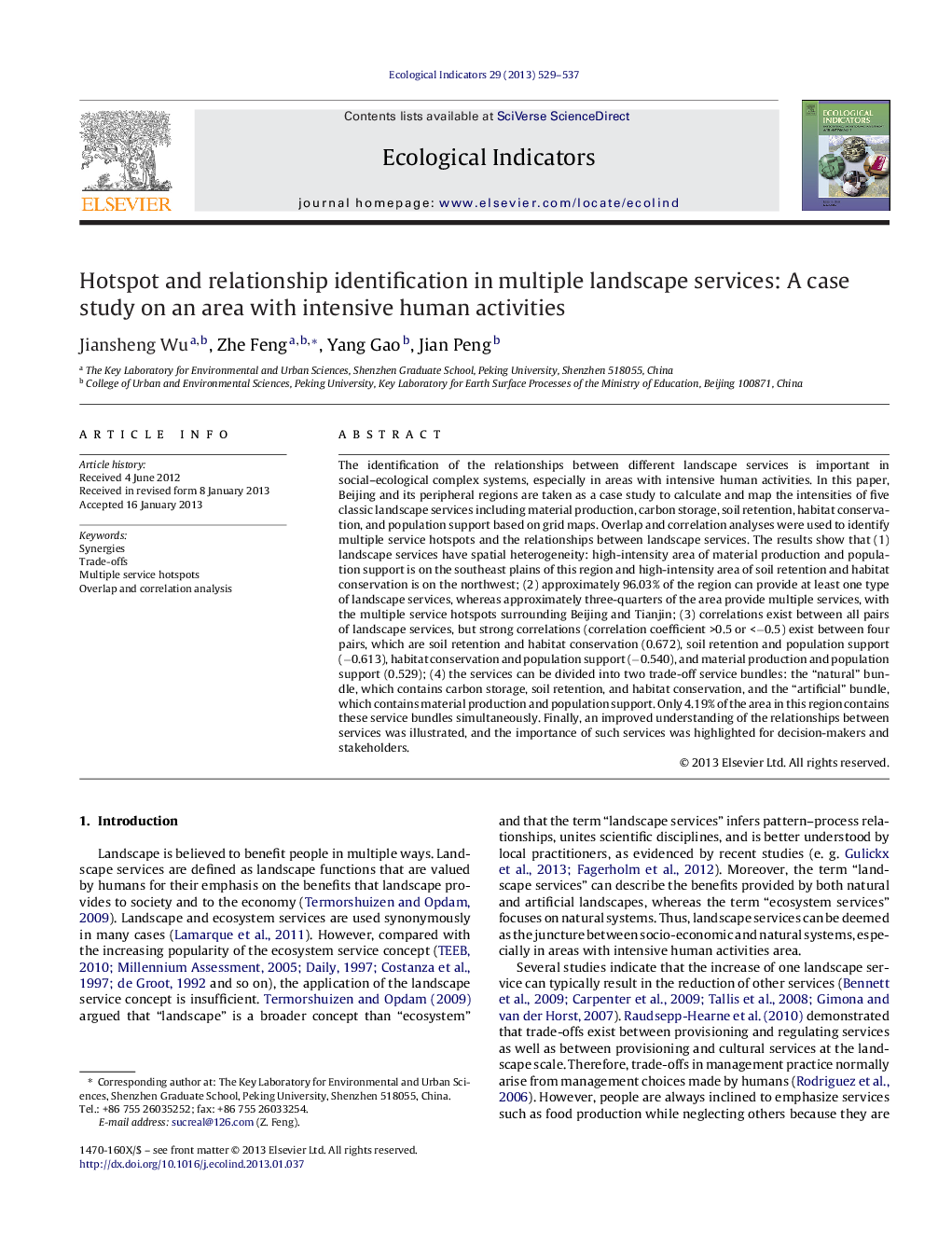| Article ID | Journal | Published Year | Pages | File Type |
|---|---|---|---|---|
| 4373508 | Ecological Indicators | 2013 | 9 Pages |
The identification of the relationships between different landscape services is important in social–ecological complex systems, especially in areas with intensive human activities. In this paper, Beijing and its peripheral regions are taken as a case study to calculate and map the intensities of five classic landscape services including material production, carbon storage, soil retention, habitat conservation, and population support based on grid maps. Overlap and correlation analyses were used to identify multiple service hotspots and the relationships between landscape services. The results show that (1) landscape services have spatial heterogeneity: high-intensity area of material production and population support is on the southeast plains of this region and high-intensity area of soil retention and habitat conservation is on the northwest; (2) approximately 96.03% of the region can provide at least one type of landscape services, whereas approximately three-quarters of the area provide multiple services, with the multiple service hotspots surrounding Beijing and Tianjin; (3) correlations exist between all pairs of landscape services, but strong correlations (correlation coefficient >0.5 or <−0.5) exist between four pairs, which are soil retention and habitat conservation (0.672), soil retention and population support (−0.613), habitat conservation and population support (−0.540), and material production and population support (0.529); (4) the services can be divided into two trade-off service bundles: the “natural” bundle, which contains carbon storage, soil retention, and habitat conservation, and the “artificial” bundle, which contains material production and population support. Only 4.19% of the area in this region contains these service bundles simultaneously. Finally, an improved understanding of the relationships between services was illustrated, and the importance of such services was highlighted for decision-makers and stakeholders.
► Five landscape services are calculated and mapped using grids. ► The relationship between two service bundles is detected using overlap analysis. ► The impact of thresholds to multiple service areas is measured.
